Opening tomorrow, Tibet at a Glance: Special Exhibition of Tibetan Miniatures at the Mongolian and Tibetan Cultural Center showcases Tibetan figurines made by monks at the Drepung Loseling Monastery in India.
Decked out in traditional clothes, the figurines are an introduction to the profound and diverse culture of Tibet. The exhibition will cover seven themes: kings and ministers; Lhasa street scenery; Tibetan costume; vajra or tantric dance; prayer; Milarepa, a celebrated historical figure in Tibetan Buddhism; and Tibetan theater.
Drepung Loseling Monastery itself has a fascinating history. Established in 1416, the original Drepung Monastery was regarded as the most important monastery of the Gelug school of Tibetan Buddhism. Located at the foot of Mount Gephel on the outskirts of Lhasa, in its heyday, the monastery housed 7,700 monks and was thought to be the largest in the world.
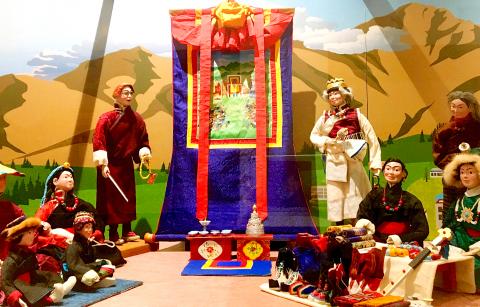
Photo courtesy of Ministry of Culture
After the Tibetan uprising in 1959 and China’s ensuing crackdown on Tibetan governance, religious and social structures, about 250 monks from Drepung Monastery escaped to India, where they founded Drepung Loseling Monastery in the spirit of the original. This “monastery in exile” now houses more than 3,000 monks.
Tibet at a Glance is part of the ongoing Tibetan Culture and Art Festival, organized by the Ministry of Culture and now in its fifth year.
The festival program also includes four talks conducted in Mandarin on Tibetan life, death and wedding rites; Tibetan documentaries; spirituality; and Tibetan yoga. The talks will take place tomorrow and on Jan. 18, Feb. 22 and March 14 next year respectively. In addition, there will be interactive sessions to make hand-molded rice flour figurines and paper crafts on Dec. 28 this year and March 21 next year respectively.
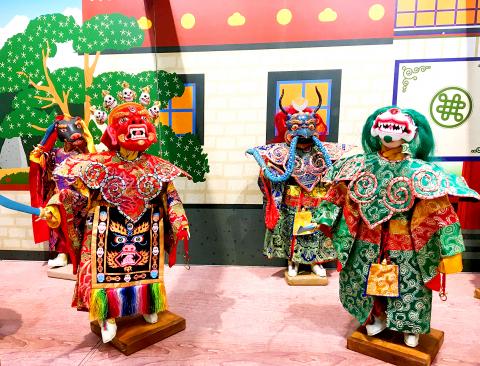
Photo courtesy of Ministry of Culture
■ Tibet at a Glance: Special Exhibition of Tibetan Miniatures shows until March 31 next year and is open Mondays to Saturdays, 9am to 6pm at the Mongolian and Tibetan Cultural Gallery (蒙藏文化館), 3, Lane 8, Qingtian St, Taipei City (臺北市青田街八巷三號).
■ Online registration is required for the talks and hands-on activities at: event.culture.tw/MOC. Several events are already booked.
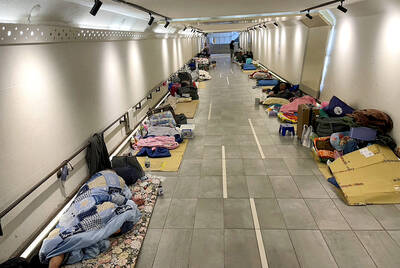
From the last quarter of 2001, research shows that real housing prices nearly tripled (before a 2012 law to enforce housing price registration, researchers tracked a few large real estate firms to estimate housing price behavior). Incomes have not kept pace, though this has not yet led to defaults. Instead, an increasing chunk of household income goes to mortgage payments. This suggests that even if incomes grow, the mortgage squeeze will still make voters feel like their paychecks won’t stretch to cover expenses. The housing price rises in the last two decades are now driving higher rents. The rental market
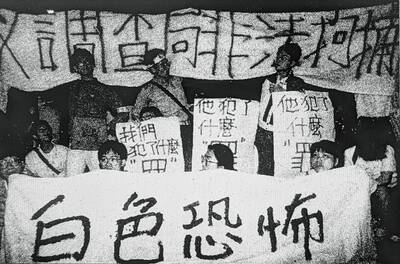
July 21 to July 27 If the “Taiwan Independence Association” (TIA) incident had happened four years earlier, it probably wouldn’t have caused much of an uproar. But the arrest of four young suspected independence activists in the early hours of May 9, 1991, sparked outrage, with many denouncing it as a return to the White Terror — a time when anyone could be detained for suspected seditious activity. Not only had martial law been lifted in 1987, just days earlier on May 1, the government had abolished the Temporary Provisions Effective During the Period of National Mobilization for Suppression of the Communist

When life gives you trees, make paper. That was one of the first thoughts to cross my mind as I explored what’s now called Chung Hsing Cultural and Creative Park (中興文化創意園區, CHCCP) in Yilan County’s Wujie Township (五結). Northeast Taiwan boasts an abundance of forest resources. Yilan County is home to both Taipingshan National Forest Recreation Area (太平山國家森林遊樂區) — by far the largest reserve of its kind in the country — and Makauy Ecological Park (馬告生態園區, see “Towering trees and a tranquil lake” in the May 13, 2022 edition of this newspaper). So it was inevitable that industrial-scale paper making would
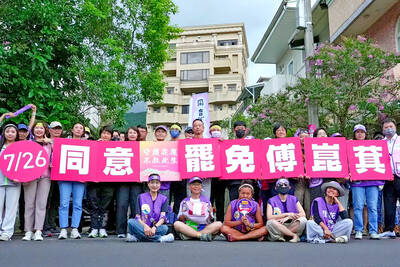
Hualien lawmaker Fu Kun-chi (傅?萁) is the prime target of the recall campaigns. They want to bring him and everything he represents crashing down. This is an existential test for Fu and a critical symbolic test for the campaigners. It is also a crucial test for both the Chinese Nationalist Party (KMT) and a personal one for party Chairman Eric Chu (朱立倫). Why is Fu such a lightning rod? LOCAL LORD At the dawn of the 2020s, Fu, running as an independent candidate, beat incumbent Democratic Progressive Party (DPP) lawmaker Hsiao Bi-khim (蕭美琴) and a KMT candidate to return to the legislature representing